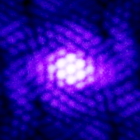|
Science and Astronomy Questions
|
|
| HarbingerDawn | Date: Sunday, 05.05.2013, 15:56 | Message # 121 |
 Cosmic Curator
Group: Administrators
 United States
United States
Messages: 8717
Status: Offline
| Quote (smjjames) Would it be possible for moons to still orbit around a planet that is tidally locked to it's star?
Yes
All forum users, please read this!
My SE mods and addons
Phenom II X6 1090T 3.2 GHz, 16 GB DDR3 RAM, GTX 970 3584 MB VRAM
|
| |
| |
| smjjames | Date: Sunday, 05.05.2013, 16:08 | Message # 122 |
|
World Builder
Group: Users
 United States
United States
Messages: 913
Status: Offline
| Quote (HarbingerDawn) Quote (smjjames)
Would it be possible for moons to still orbit around a planet that is tidally locked to it's star?
Yes
Okay cool, thanks for the clarification. I was thinking of moons that are orbiting more or less on the plane of the solar system rather than vertical to the plane of the solar system, but ok.

|
| |
| |
| Watsisname | Date: Monday, 06.05.2013, 06:20 | Message # 123 |
 Galaxy Architect
Group: Global Moderators
 United States
United States
Messages: 2613
Status: Offline
| Quote (apenpaap) The strength of tidal effects is proportional to the square of the distance
Inverse cube of the distance. Tidal force is a differential gravitational force.  Added (06.05.2013, 09:20)
---------------------------------------------
Apenpaap is correct by the way about the moons spiraling in for tidally-locked planets. The reason is that for any moon orbiting within the planet's Hill radius (which obviously it has to), the orbital period is less than the planet's orbital period. If the planet is tidally locked, then the planet's orbital period equals its spin period, and the moon must orbit faster than this. Therefore the moon orbits ahead of the tidal bulge that it raises on the planet, so the bulge pulls backward on the moon, decelerating it and causing it to spiral inward. As it spirals in this process gets faster and faster until it either gets torn apart or crashes into the planet.
I'm not sure what the time-frame for the spiral-in time would be (it's not even remotely easy to calculate), but it must be relatively short because the distance at which planets become tidally locked to their stars is small, so their Hill radii are also small. We probably would not see very many moons around tidally-locked planets in nature.

Edited by Watsisname - Sunday, 05.05.2013, 20:14 |
| |
| |
| neutronium76 | Date: Tuesday, 07.05.2013, 21:40 | Message # 124 |
 World Builder
Group: Users
 Greece
Greece
Messages: 718
Status: Offline
| quoted from here
Quote (HarbingerDawn) And our ocean actually is blue, water is blue, it does not just reflect the color of the sky
Quote (HarbingerDawn) You know, there are some people out there who believe that the sky is blue because it is scattering the blue color of the ocean. I'm not joking. Anyway, the point is that the sky is blue and the ocean is blue, and neither needs the other one to be blue because each is intrinsically blue due to its physical properties.
Forgive my ignorance but can you prove that water is intrinsically blue? Cause when I drink water it looks transparent.
And as midtskogen said, when the sky is cloudy, the water at the sea looks grey. Sorry if it is not strictly an astronomy question but is definitely a noob one 
PC1:Core i7 970@3.34GHz, 6 cores/12 threads, 12GB DDR3 RAM@1.34GHz, 2x(SLI) GTX-580 GPUs 3GB VRAM(GDDR5)@1GHz, OS:Win7x64SP1
PC2:Core2Quad X9770@3.2GHz, 2 cores/4 threads 4GB DDR2 RAM@1GHz, GTX-285 GPU 1GB VRAM(DDR3)@1.24GHz, OS:WinVistax64SP2
|
| |
| |
| HarbingerDawn | Date: Tuesday, 07.05.2013, 21:59 | Message # 125 |
 Cosmic Curator
Group: Administrators
 United States
United States
Messages: 8717
Status: Offline
| Well, a room full of air looks transparent too. In order for the scattering effect to become noticeable you need a sufficient amount of the substance. Air looks blue only if you have a lot of it, and the same is true for water.
Also, when the sky is cloudy the sea looks more gray than normal, but not as gray as the sky. The reason it looks more gray when cloudy and more blue when clear is because the sea does reflect the sky, obviously, so a large part of the color you see when looking at it depends on the color of the sky. But there's more to it than that; water does indeed have an intrinsic blue color.
Read all about it here: http://en.wikipedia.org/wiki/Color_of_water
And for a more technical explanation: http://www.dartmouth.edu/~etrnsfer/water.htm
All forum users, please read this!
My SE mods and addons
Phenom II X6 1090T 3.2 GHz, 16 GB DDR3 RAM, GTX 970 3584 MB VRAM
Edited by HarbingerDawn - Tuesday, 07.05.2013, 22:03 |
| |
| |
| Watsisname | Date: Tuesday, 07.05.2013, 23:43 | Message # 126 |
 Galaxy Architect
Group: Global Moderators
 United States
United States
Messages: 2613
Status: Offline
| Fun fact:
If you dilute milk, such as by adding a few drops of it to a glass of water, it becomes blue (much more blue than the water alone would account for). Milk looks white not because it is intrinsically white, but because the suspended fat and protein particles (mmm, delicious) scatter blue light in similar manner that the atmosphere does. The number density of particles in milk is just so high that the blue photons get scattered back into the light path just as much as they get scattered out of it, so overall it looks white unless you dilute it.
Similarly, if the density of air molecules in our atmosphere was greatly increased, the sky would turn white. This is also why the sky near the horizon during midday looks whiter than the sky at zenith.
Even more fun fact: The sky is not actually blue. Yes, I'm being serious. 
If Rayleigh scattering alone dictated the color of the sky, then it would be violet, because violet is more strongly scattered than blue. So why isn't the sky violet? You might consider that the sun's spectrum tails off toward violet and ultraviolet, so there are fewer violet photons. Violet light is also somewhat more readily absorbed by the atmosphere. However, it's clear that there's still a lot of violet light because we see it in rainbows. So the main reason why the sky doesn't look violet must come from elsewhere.
The answer is our eyes. They lie to us! We all know that we don't see infrared, or ultraviolet, but what might not be so obvious is that we don't even see all wavelengths of visible light equally well. Our eyes are most sensitive to green, and vastly less sensitive to red and violet. You can test this yourself if you have equal-intensity lasers of different spectral colors -- the green laser will look the brightest.
The true color of the sky is about an equal mix of blue and violet (indigo?), but it is the differential response to wavelength by our retinas that makes it look blue.

|
| |
| |
| neutronium76 | Date: Wednesday, 08.05.2013, 09:57 | Message # 127 |
 World Builder
Group: Users
 Greece
Greece
Messages: 718
Status: Offline
| Thank you all people!  . Interesting facts... . Interesting facts...
PC1:Core i7 970@3.34GHz, 6 cores/12 threads, 12GB DDR3 RAM@1.34GHz, 2x(SLI) GTX-580 GPUs 3GB VRAM(GDDR5)@1GHz, OS:Win7x64SP1
PC2:Core2Quad X9770@3.2GHz, 2 cores/4 threads 4GB DDR2 RAM@1GHz, GTX-285 GPU 1GB VRAM(DDR3)@1.24GHz, OS:WinVistax64SP2
|
| |
| |
| SolarLiner | Date: Wednesday, 08.05.2013, 17:24 | Message # 128 |
 Explorer
Group: Users
 France
France
Messages: 267
Status: Offline
| Quote (HarbingerDawn) In order for the scattering effect to become noticeable you need a sufficient amount of the substance. Air looks blue only if you have a lot of it.
Atmospheric scattering is why we see Earth from space blue too, and comes even bluer on the edges, no ?
custom landing page to share: http://bit.ly/spaceengine
|
| |
| |
| HarbingerDawn | Date: Wednesday, 08.05.2013, 17:26 | Message # 129 |
 Cosmic Curator
Group: Administrators
 United States
United States
Messages: 8717
Status: Offline
| Quote (SolarLiner) Atmospheric scattering is why we see Earth from space blue too, and comes even bluer on the edges, no ?
Yes, though some of the blue color also comes from the oceans.
All forum users, please read this!
My SE mods and addons
Phenom II X6 1090T 3.2 GHz, 16 GB DDR3 RAM, GTX 970 3584 MB VRAM
|
| |
| |
| Rizdek | Date: Friday, 28.06.2013, 01:50 | Message # 130 |
|
Observer
Group: Newbies
 United States
United States
Messages: 3
Status: Offline
| I'm interested in knowing more about how asteroids form. I've searched various sites and this is the typical explanation: "Asteroids are left over material in the solar system that never formed into the sun and planets."
But then some discussion go on to describe them as chunks of rock and/or metal...some fairly large. But what would "form" rocks for example? AFAIK, there are three basic kinds of rocks...igneous, metamorphic and sedimentary. The forces that result in these kinds of rocks don't influence dust in space and don't seem to be the explanation for "rocks" in space. Are asteroids yet another kind of rock different from these three basic kinds? The asteroid that hit in AZ several thousand years ago was supposedly a large iron chunk. How could an asteroid of primarily iron form into a chunk out in space? Doesn't it take heat and pressure to cause atoms of iron to fuse into a chunk or chunks? It seems much more likely to me that asteroids that are solid...solid enough to land on, or solid enough to hold together while entering earth's atmosphere are the remains of some large space body...a planet for example that was somehow blasted apart.
|
| |
| |
| Joey_Penguin | Date: Friday, 28.06.2013, 02:09 | Message # 131 |
 Pioneer
Group: Users
 United States
United States
Messages: 311
Status: Offline
| Asteroids formed the same way planets did. The only difference is that they didn't accrete enough material to grow very large. The reason the main belt asteroids didn't coalesce into a planet is because Jupiter's gravity accelerated the asteroids so that collisions would pulverize them instead of merging them. This disturbance likely also stunted Mars' growth.
Careful. The PLATT Collective has spurs.
|
| |
| |
| Watsisname | Date: Friday, 28.06.2013, 04:14 | Message # 132 |
 Galaxy Architect
Group: Global Moderators
 United States
United States
Messages: 2613
Status: Offline
| Hi Rizdek, welcome to the board! I hope you don't mind my moving your post to this thread, as this is where people do astronomy Q&A. 
Rocks, broadly speaking, are large assemblages of minerals in solid form. On Earth they can be grouped into the three categories you listed: Sedimentary rocks were deposited by the action of water, metamorphic were altered by intense pressure and heat deep underground, and igneous were formed by the cooling and crystallization of molten minerals.
But how did rocks in space form? The answer, as Joey says, is the same as what led to the formation of the planets in the first place. Go back a little over four and a half billion years and there were no planets, but instead a large disk of gas and dust orbiting the nascent sun. Dust grains gradually clumped together to form larger ones, and in a kind of snowball process these continued to clump together and grow and eventually got so large that they could attract each other by their own gravity -- we call these objects planetesimals. Eventually some of these became the planets we see today.
But not everything ended up inside a planet, and this is why we see asteroids. The asteroid belt was well underway to forming a planet, but the process was halted as Jupiter's gravity stirred the belt up, preventing bodies from growing further.
So, in a nutshell, rocks on Earth are the exact same material as rocks in space, except that on Earth they have been altered by geologic forces (tectonics, water, eruptions, etc), and since they are continually being destroyed and recreated none of them are as old as the solar system. Rocks in space on the other hand are in more or less the exact same condition that they were when they formed out of the solar nebula, and most of them are very, very old.
Quote (Rizdek) How could an asteroid of primarily iron form into a chunk out in space?
Recall back to the formation of the planets. When an object grows large enough to become a planetesimal something interesting happens -- it melts. It is heated from the outside by all the objects falling into it, and it is heated from within by radioactivity. Once molten, the dense materials (like iron) sink to the center and form a core, while the lighter material floats to the top. This process is called differentiation, and that's why all the planets have metallic cores. Some of the asteroids, too, were differentiated. If such an asteroid is then fragmented by a large collision, any of the core fragments will be made up of solid iron. In other words, all iron meteorites came from the cores of differentiated asteroids.
Quote It seems much more likely to me that asteroids that are solid...solid enough to land on, or solid enough to hold together while entering earth's atmosphere are the remains of some large space body...a planet for example that was somehow blasted apart.
We don't believe so, because we find a lot of asteroids and meteorites that did not come from a differentiated body like a planet. So the asteroid belt was never a single planet that was then shattered.
I hope that helped clear things a little for you, and please feel free to ask more questions. 

Edited by Watsisname - Friday, 28.06.2013, 04:30 |
| |
| |
| Rizdek | Date: Friday, 28.06.2013, 11:30 | Message # 133 |
|
Observer
Group: Newbies
 United States
United States
Messages: 3
Status: Offline
| Quote (Watsisname) If such an asteroid is then fragmented by a large collision, any of the core fragments will be made up of solid iron. In other words, all iron meteorites came from the cores of differentiated asteroids.
Thanks! Your response explains it. That's kind of what I was trying to say when I imagined that solid asteroids were the remains of some larger space body. I didn't necessarily mean an earth sized planet, for example, but one just large enough to have differentiated.
How much mass is required for a space body to become molten and "differentiate?"
Edited by Rizdek - Friday, 28.06.2013, 20:12 |
| |
| |
| Watsisname | Date: Friday, 28.06.2013, 23:25 | Message # 134 |
 Galaxy Architect
Group: Global Moderators
 United States
United States
Messages: 2613
Status: Offline
| Glad to be of help!
There does not seem to be a specific mass at which differentiation occurs, though it definitely depends on mass, and composition as well. We do know that Vesta is differentiated, so that helps provide an upper limit for rocky asteroids. However, there's also evidence that Ceres, despite being much larger, is only partially differentiated, or might not be at all. So there's not an easy answer.

|
| |
| |
| Rizdek | Date: Saturday, 29.06.2013, 11:22 | Message # 135 |
|
Observer
Group: Newbies
 United States
United States
Messages: 3
Status: Offline
| Thanks again! 
|
| |
| |